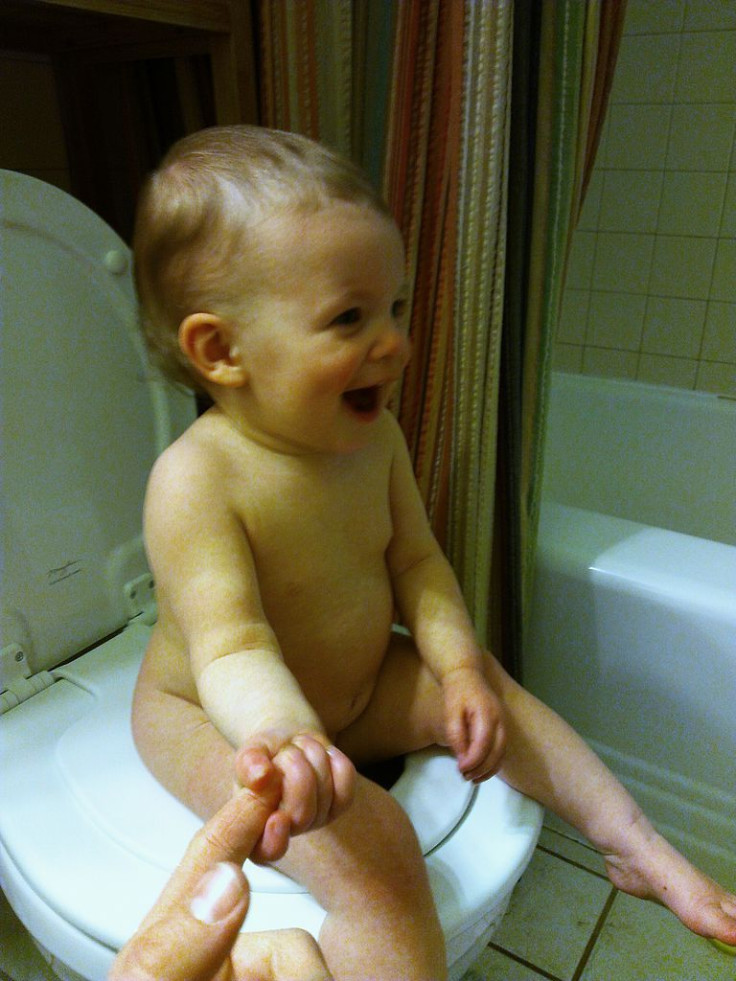Does Your Child Have Abdominal Pain? Chances Are It’s Just Constipation

Pediatric emergency departments frequently see kids with abdominal pain and their worried parents. A new study from the Children's Hospital of the University of Pittsburgh found that constipation is the top diagnosis for children who appear in emergency departments with abdominal pain, but luckily, it's rarely a cause for hospitalization.
Abdominal pain could potentially signal a wide array of conditions, ranging from banal indigestion to emergencies requiring surgery, such as acute appendicitis or ovarian torsion. A common complaint in childhood, emergency rooms across the country devote a lot of resources to diagnosing patients with abdominal pain.
Researchers, led by Dr. Kerry S. Caperell of the University of Louisville School of Medicine, analyzed medical records of emergency department patients ages 1 to 18 with a history of abdominal pain over the last two years. Abdominal pain was a factor in 6.2 percent of all patient encounters, out of a total of 10,121 visits.
After receiving thorough assessments, consisting of patient histories, diagnostic imaging, and comprehensive physical examinations, which sometimes involve a rectal exam, constipation ended up being the top diagnosis among children who received one. Overall, 20 percent of the patients with abdominal pain were deemed to be constipated. Among children ages 5-12, more than one in four received the diagnosis.
One of the motivations behind the study was to find if there were any differences in how abdominal pain was evaluated and treated among races, but little to no differences were found.
Only 3 percent of children who were constipated required follow-up hospitalization, indicating that more often than not, children were not in a serious enough condition to warrant intense medical intervention.
While constipated kids may not require inpatient treatment, they could use additional support to relieve the condition, especially if their constipation is chronic.
Constipation could be brought on by a number of factors. One major culprit is a lack of fiber in children's diets, as fiber stimulates the gastrointestinal tract to help move digestive contents along. High fiber foods are usually fruits, vegetables, legumes, and whole grains — exactly the types of foods that modern Western diets tend to omit.
Other common causes of constipation in both adults and children are poor fluid intake — which can lead to hard, small, and difficult-to-pass stool — and a sedentary lifestyle. Being active or simply walking around moves the abdominal muscles, which in turn contributes to peristalsis, the squeezing of digestive organs that mobilizes gastrointestinal contents along.
Kids, however, might be more susceptible to certain behavioral and social factors moreso than adults. Relatively new to the potty game, children tend to be hesitant to report a lack of stool to their parents or fear the pain that might come with constipation.
"We call it defecation anxiety," Jessica Hankinson, pediatric psychologist, told The New York Times. "You have hard, difficult stools to pass, you have a painful bowel movement, you start withholding."
"My experience is the kids don't like to go to the bathroom at school, so there's a sort of voluntary retention that exacerbates itself." Caperell said.
Further analysis of the study data showed that constipation rates were highest in 10-year-old boys, who are midway between a newfound independence in bathroom habits and a sense they cannot complain to their parents as much.
Epidemiologists have tried to estimate the prevalence of constipation among children, which could range anywhere from 1 to 30 percent of kids. The impact on the emergency system is high, however, with one emergency department visit per two children with constipation, compared to one visit for every seven kids in the general population.
Though constipation may seem innocuous, parents and guardians shouldn't hesitate to seek medical help if they think there is something ailing their kids. In the study, 5.1 percent of white children and 1.9 percent of African-American children who visited emergency rooms with abdominal pain were subsequently hospitalized for appendicitis, a terribly painful condition requiring surgery.
Experts suggest that to alleviate problems induced by constipation, parents, and guardians should create an open environment in which kids can approach them with problems, free from fear of embarrassment. Then they can try some simple interventions, like eating dried fruit, drinking water, and going for a walk, before it turns into a trip to the emergency room, or worse yet, chronic constipation.
Source: Caperell K, Pitetti R, Cross KP. Race and acute abdominal pain in a pediatric emergency department. Pediatrics. 2013
Published by Medicaldaily.com



























